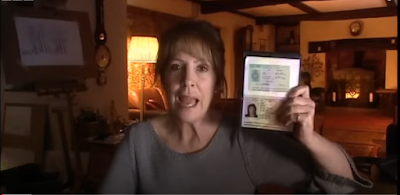Radio: Launch of BBC Radio 1 CSP
Historical, social and cultural contexts
1) What radio stations were offered by the BBC before 1967?
The radio stations that were offered by the BBC before 1967 were BBC Radio Home, BBC Radio Light and BBC Third.
2) How was BBC radio reorganised in September 1967? What were the new stations that launched?
The new stations were Radio 4 (replaced BBC Radio Home), Radio 2 and Radio1 (replaced BBC Radio Light) and Radio 3 (replaced BBC Third).
3) What was pirate radio and why was it popular?
Pirate radio was 'Pop' music and it was becoming more popular and attitudes in young people were becoming more relaxed.
4) Why did pirate radio stop broadcasting in 1967?
Pirate radio stopped broadcasting in 1967 because of the government as they were concerned that people would no longer buy records. So the government made a rule that BBC would only play 5 hours of music per day.
5) How did the BBC attract young audiences to Radio 1 after pirate radio stations were closed down?
The BBC attracted young audiences to Radio 1 audience by hiring popular radio operators.
6) What was 'needle time' and why was it a problem for BBC Radio?
Needle time was a limited amount of time that recorded music could be streamed on radio.
7) How did BBC Radio 1 offer different content to previous BBC radio stations?
They offered different content to previous BBC radio stations by It focusing on one younger audiences by streaming more pop music.
8) Who was the first presenter for BBC Radio 1 and why did these new Radio 1 DJs cause upset initially at the traditional BBC?
The first presenter was Tony Blackburn.
9) Listen to excerpts from the Tony Blackburn's first 1967 broadcast - how might it have appealed to young listeners?
Because they streamed more pop music and more American style
10) How was Tony Blackburn's radio show more like pirate radio rather than traditional BBC radio content?
Because it was fast paced presentation style showing a emphasis on youth culture.
Audience and industry
1) What was the target audience for BBC Radio 1 in 1967?
Young adults/teenagers
2) Why did Radio 1 initially struggle to attract young listeners?
Because it was seen as boring to teenagers.
3) What audience pleasures did Radio 1 offer listeners in 1967? (Use Blumler and Katz Uses and Gratifications theory).
Because it was offered the pleasure of diversion and entertainment through the fast paced pop music.
4) How is the BBC funded?
They were payed by people who pay their tv license where then the money goes to BBC so they can pay their employees.
5) Applying Stuart Hall's Reception theory, what would the preferred and oppositional readings have been for BBC Radio 1 in 1967?
1) What was the target audience for BBC Radio 1 in 1967?
Young adults/teenagers
2) Why did Radio 1 initially struggle to attract young listeners?
Because it was seen as boring to teenagers.
3) What audience pleasures did Radio 1 offer listeners in 1967? (Use Blumler and Katz Uses and Gratifications theory).
Because it was offered the pleasure of diversion and entertainment through the fast paced pop music.
4) How is the BBC funded?
They were payed by people who pay their tv license where then the money goes to BBC so they can pay their employees.
5) Applying Stuart Hall's Reception theory, what would the preferred and oppositional readings have been for BBC Radio 1 in 1967?
Oppositional : old boring BBC
Preferred : new style of BBC that copied American pop

Comments
Post a Comment